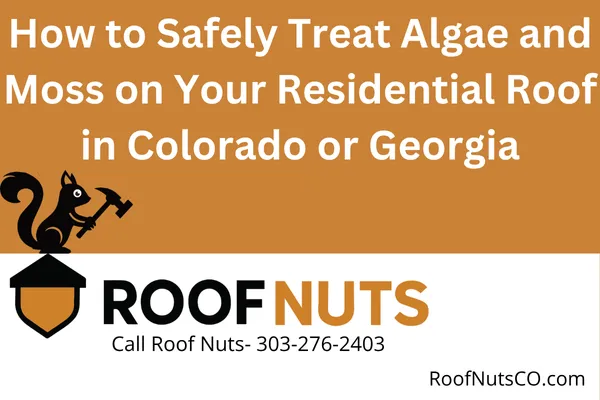
How to Safely Treat Algae and Moss on Your Residential Roof in Colorado or Georgia
Algae and Moss Treatment for Residential Roofs: What Every Homeowner Should Know
Algae and moss can do more than just make your roof look dirty. Left untreated, they can shorten your roof’s lifespan, damage shingles, and lead to costly repairs. Here's what you need to know about treating and preventing algae and moss growth—especially if you're a homeowner in Colorado or Georgia.
Why Is Algae or Moss Growing on Your Roof?
Algae and moss thrive in shady, damp environments. Homes with overhanging trees, poor roof drainage, or north-facing slopes are more likely to have problems. Here’s how to tell the difference:
Algae usually appears as black streaks or stains.
Moss looks like a fuzzy green layer and can grow between or over shingles.
Both issues hold moisture against your roof, potentially damaging your shingles and underlayment.
Is Algae or Moss Harmful to Your Roof?
Yes. While it may seem cosmetic at first, moss in particular can:
Lift shingles and trap water underneath
Accelerate wear and tear
Reduce the roof’s ability to shed water properly
Lead to leaks and rot over time
How to Remove Algae and Moss Safely
Avoid pressure washing. It can damage roofing materials, especially asphalt shingles, and void your warranty. Instead, follow these steps:
1. Use a Proper Roof Cleaner
Look for a non-corrosive cleaner designed for roof algae and moss. Avoid bleach-only formulas, which can harm landscaping and your roof’s finish.
2. Apply Gently
Use a sprayer attached to your garden hose or a pump sprayer. Spray on a dry, cool day. Let the solution soak in—do not scrub or rinse immediately.
3. Let It Work Over Time
Most moss will gradually wash away with rain after the treatment. If needed, lightly brush away the remains with a soft broom once dry.
4. Prevent Future Growth
Install copper or zinc strips near the ridge cap
Trim overhanging tree limbs
Clean your gutters regularly
Improve roof ventilation to reduce humidity
What If You Have a Metal or Tile Roof?
Metal and tile roofs have their own requirements:
Metal roofs: Avoid acidic cleaners that may corrode coatings.
Tile roofs: Never walk on tiles without proper technique—cracks and breakage can occur easily.
Always consult a licensed roofing contractor if you’re unsure. Roof Nuts offers inspections and moss/algae treatment plans tailored for Colorado and Georgia climates.
Frequently Asked Questions
What’s the best time of year to treat moss?
Spring or fall. Avoid hot summer days or freezing winter temps.
Can moss damage my roof’s structure?
Yes. Trapped moisture can degrade shingles, wood decking, and underlayment.
Will moss or algae return?
It can. Prevention measures like metal strips and tree trimming help reduce recurrence.
Call a Pro
If your roof has stubborn growth or is hard to access, don’t risk a fall or costly damage. Call Roof Nuts for a safe, professional treatment.
Colorado: 303-276-2403
Georgia: 404-476-6851
Get help from trusted experts in residential roofing. Visit RoofNutsCO.com or RoofNutsGA.com to schedule an inspection.
